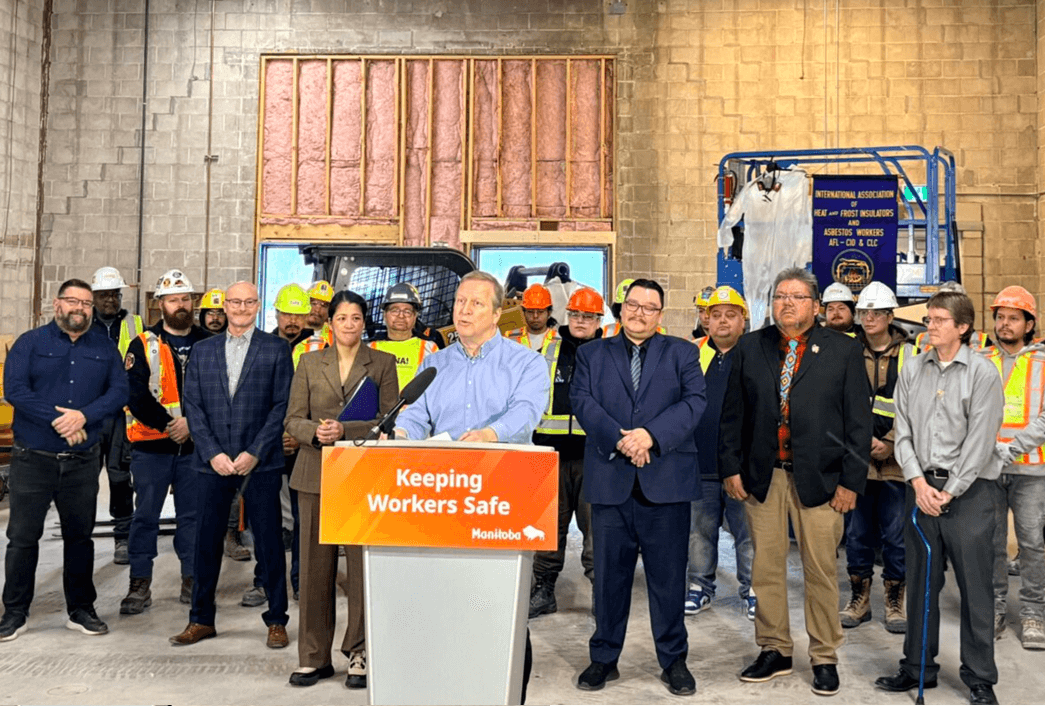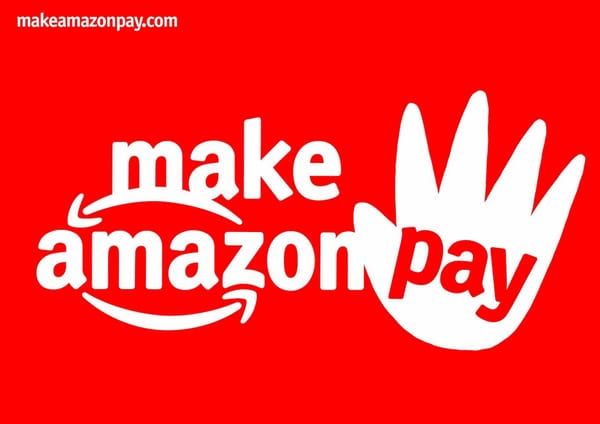
June is Lesbian, Gay, Bisexual, Transgender and Queer (LGBTQ+) Pride Month. In recognition of this important time of year, this week I sat down with Suzanne Mills to talk about the challenges faced by LGBTQ+ workers.
Suzanne is an associate professor in the School of Labour Studies at McMaster University. Her research explores the work and employment experiences of LGBTQ+ workers, particularly in deindustrializing cities. In undertaking this research, Suzanne and her colleagues have worked with a variety of community and labour partners, including LGBTQ+ organizations, unions, worker centres, and Indigenous communities and governments.
Adam King: First, happy Pride, Suzanne!
In the spirit of both celebrating social progress and critically reflecting on the challenges still faced, I thought it would be helpful for readers to hear about the relationship between work and LGBTQ+ issues. After all, most queer folks are also workers.
In what types of jobs are LGBTQ+ workers most likely to be employed? How does this vary regionally or geographically in Canada?
Suzanne Mills: Canada lacks strong data on LGBTQ+ workers broadly. What data we do have shows that lesbian, gay and bisexual people are overrepresented in “feminized” occupations. These are the same types of jobs in which cis women are overrepresented, such as public service work and the low-wage, private service sector jobs, more broadly. This overrepresentation of course largely applies to gay and bisexual men. They are less likely to be employed in “blue-collar” roles typically coded as “male” work.
We’re still waiting on data for trans people. At present, we lack population level sampling. The last census was the first to ask respondents about their gender identity. That was a big step and we’re all eagerly awaiting the results. Our research team, however, has done smaller, community-level surveying. These data show that trans and nonbinary people tend to be under-employed — that is, they’re working in jobs which don’t fully utilize their education or skills. These folks are also more likely to be unemployed or otherwise outside of the labour force altogether.
AK: In Canada, we’ve made strides when it comes to formal rights for LGBTQ+ people in the workplace and beyond, including protections from outright discrimination. We’ve also seen positive improvements socially and culturally in the areas of inclusivity and acceptance. But your research suggests that queer and trans workers still disproportionately experience precarious employment. Why is this?
SM: This is a complex question. First, I’d say that most workers, generally, labour in workplaces where their rights simply aren’t enforced. The vast majority of workers don’t have a union at work. Many workers are in small workplaces with no human resources department. In this context, we’d expect to find those with intersecting sexual identities experiencing higher incidences of workplace rights violations.
Second, what protections do exist for LGBTQ+ workers are written into human rights codes. Much like employment standards legislation, enforcing these rights is a “complaint-driven” process. Individuals who believe they’ve experienced a violation must individually file a complaint. People usually don’t have any support in this process unless they’re in a union, and they might fear retaliation from their employer.
In general, there is unequal access to the formal rights that do exist in law. Rights also operate at an abstract level and don’t necessarily take into account the complicated ways that workplaces and labour markets are cis-gendered and heteronormative. There are deeper issues that shape how work and people are valued. A rights-based approach has a hard time addressing this. Social and cultural change begins to grapple with these problems, but there’s a long way to go.
AK: What particular challenges do LGBTQ+ workers face?
SM: Our survey results show that there aren’t nearly as many reports of overt discrimination at work as there were 10 or 15 years ago, or prior to sexual and gender identity being included in provincial human rights legislation. At the same time, we heard about many other ways that queer people are funnelled into bad jobs. Some of this has to do with the ways that queer and nonbinary people are made to feel uncomfortable or unfit for certain types of work.
AK: It seems in many instances that LGBTQ+ identity amplifies the consequences of precarious employment.
SM: LGBTQ+ workers are certainly more susceptible to forms of employment precarity. They are more likely to experience insecure work, low wages and a general lack of rights protections than their hetero or cis counterparts.
These workers also experience considerable difficulties navigating the labour market, which is in part the consequence of employer discrimination. But, I’d say these difficulties have more to do with experiences of past discrimination, or what we might call “anticipated discrimination.” For example, we found many people who stopped looking for work because they feared applying as an out queer person or as a trans person who didn’t “pass” as cis-gendered. If someone in this situation finds a “safe” employer where they feel comfortable, they may feel reluctant to apply for or move to a different, perhaps better, job. We heard from workers, for example, who were working low-wage service jobs, getting an insufficient number of hours and earning poverty-level wages, but who were not actively looking for better opportunities because they felt they had a supportive employer. Other times, the opposite happens. We heard from a gay man working in construction who, after Trump and overt forms of right-wing discourse became more prominent, left his trade and went to work in a call centre.
In short, LGBTQ+ people frequently make employment decisions based on the desire to have a safe and non-discriminatory workplace. Sometimes those choices have adverse consequences in terms of the overall quality of their jobs.
It’s not all bad though. We do find LGBTQ+ workers who are doing quite well. Often these are white workers, however — though not entirely. Most notably, these workers tended to be employed in the public sector, which is, in terms of employment and wage security, the best place for queer workers to be. Though, even here, not all workers feel entirely comfortable at work. LGBTQ+ teachers, for example, had negative experiences with parents.
AK: At the risk of sounding like a neoclassical economist, there is a sense in which this treatment of queer folks at work is really inefficient. If you have people who are working in jobs that under-utilize their skills and not moving freely in the labour market because they fear discrimination, you essentially have a bunch of misallocated labour.
SM: It’s true, and there certainly are some large companies that have taken up this argument (i.e., that inclusivity at work is actually good for business). In certain respects, this is the underlying premise of equity, diversity and inclusion protocols. On the other hand, I think it’s important to recognize that many types of inclusion do cost money. For example, LGBTQ people tend to have higher incidences of mental health difficulties.
AK: A lot of discrimination is actually productive for employers as well, insofar as it divides workers and prevents the latter from uniting around a common set of class-based demands.
SM: Absolutely.
AK: Your research has also focused on queer and trans workers in customer service. Is there something specific about customer service work that compounds queer and trans workers’ experiences of precarious employment?
SM: There’s a performative aspect to customer service work. How someone positions themselves in these types of jobs — their mannerisms, their appearance, their emotions — is part of what customers are buying. If part of the “product” is your “character,” then your gender presentation is also involved in that.
What our research showed is that customers often have cis-normative preferences. If a customer service worker can’t be clearly “identified,” has a trans presentation or looks “queer” in some way, they are more likely to be harassed by customers. Customers might also complain about such workers more frequently.
People generally understand that work and certain workplaces can be gendered. For example, a used car salesperson and a worker at a cosmetics store will feel pressured to present gender in different ways. Not only is it often difficult for trans or nonbinary people to fit into those binary gender norms, but also in workplaces that aren’t strongly gendered — for example, a restaurant with both male and female servers — there can be cis-normativity operating. Here the notion is that everyone should be able to be identified as either male or female. This pressure is heightened in customer service settings because customers are in a sense enlisted in “managing” workers.
AK: You also highlight the lack of adequate mental health support as a common challenge facing LGBTQ+ communities. How does the workplace amplify this issue?
SM: There are varied experiences among LGBTQ+ people. For example, workers who have access to mental health leave have a huge advantage. Roughly 80 per cent of the people we interviewed had taken some type of mental health-related leave, even if it wasn’t officially labelled as such. For people in precarious jobs, this might take the form of simply not coming to work because they’re facing mental health challenges, which often leads to job loss.
The experience of discrimination at work, or even the anticipated discrimination that I mentioned earlier, can create levels of stress that are very difficult to manage and can lead to significant mental health issues. Decades of research shows that LGBTQ+ people face much worse mental health outcomes. These issues can be especially hard for queer youth, who are also more likely to be precariously employed.
AK: As someone who’s spent a lot of time studying deindustrialization as an economic and social process, I’ve really appreciated how your work puts industrial restructuring front and centre. Can you tell us a little more about why you’ve chosen deindustrializing Canadian cities as sites to undertake this type of research?
SM: To some extent, deindustrialization is ubiquitous in Canada. Most Canadian cities, large and small, have been or are deindustrializing in some way. This means that the composition of jobs is changing, and along with it, gender norms about work.
Deindustrialization also often involves economic loss, where new industries and jobs either haven’t replaced previous ones, or if they have, the quality of jobs has worsened. Many cities or towns where this is the case are often seen as the antithesis of the urban “gay homeland.” Queer people tend to be associated with urban centres, white-collar work, creative industries — if small towns, then towns that serve tourists. Small deindustrializing cities are more likely to be thought of as places queer people leave. Our research has sought to highlight the existence and experiences of LGBTQ+ workers in these spaces.
As you’d imagine, there is a lack of research on LGBTQ+ people in deindustrializing cities, even though there are lots of queer workers in these historically working-class towns — most of whom are working class themselves. We did 50 interviews with people in Sudbury and Windsor, Ont., but we also did a community survey and had 673 responses. Only 36 per cent of respondents reported being “out” to their employer. Troublingly, queer union members were more likely to be out to their employer than to their union.
AK: That is troubling. I’d be interested to hear your reflections on how unions and the broader labour movement have done when it comes to supporting and organizing LGBTQ+ workers and championing their issues.
SM: From the 1980s through to the early 2000s, unions were at the forefront of fighting for LGBTQ workers’ rights. Unions fought for same-sex couples’ access to benefits at work. Before equal rights to these things were enshrined in law, unions ensured that same-sex couples could access employer-provided benefits through their collective agreements.
Even now, many unions have sophisticated equity programming for their membership. Go to any pride event, whether in a large centre like Toronto or in smaller cities around the country, and you’ll see a very strong union and labour movement presence. That’s a great thing.
However, in our research we found that, even when unions are involved in worker recruitment, a lot of people aren’t “out” in their union and feel disconnected from it. Most commonly, it seemed this stemmed from uncertainty about what the response would be within the union. This was true even in unions with extensive equity programming and who are active as advocates for LGBTQ+ people on a national scale. In part, there seemed to be a disconnect between national or provincial level campaigns and operations at the local or workplace level. Of course, there’s also variation between union locals, sometimes within the same national union or even in the same city or region.
Overall, I think what’s needed is a rejuvenation of union culture. Many unions are very socially active. But in deindustrializing centres in particular — though perhaps everywhere — this needs to be enhanced at the grassroots level and on the shopfloor. Outside of the workplace too, some unions do important things, such as providing camping and other recreational activities for members. These things connect workers in deeper ways and help build solidarity and inclusivity among the membership.
In a world where anti-union rhetoric is everywhere, connecting people to their union and to one another is hugely important.
AK: What strategies or reforms do you see as most important for strengthening LGBTQ+ workers’ rights, either within the labour movement or in terms of legislation?
SM: The best thing that could happen for LGBTQ+ workers is better security and labour protections for all workers.
For example, strengthening the national pension system — while this is good for all workers, it’s especially important for LGBTQ+ people. The same goes for expanded healthcare benefits for all, not tied to employment or the workplace — including mental health coverage.
AK: That’s an important point that sometimes rubs people the wrong way, but it needn’t. The more robust universal programs are, the better people in marginalized situations are protected. Universal programs have the advantage of both covering everyone (or at least ideally) and disproportionately benefiting those who need them most.
SM: Absolutely, and they also strengthen feelings of solidarity and collectivism. Emphasizing our common interests is very important in any political strategy.
At the workplace level, we ultimately need stronger structures in place that support people collectively, structures that don’t depend so heavily on individual workers making complaints, like human rights and employment standards enforcement currently does. Moving beyond this reactive model would help strengthen employment standards and human rights protections for LGBTQ+ workers.
On the union side, we need to make sure that activists and members can gain access to programming and support. Unions might also consider mandatory training around LGBTQ+ issues for people holding leadership positions. This goes back to changing and strengthening union culture.
AK: That’s a crucial point. At a fundamental level, discrimination and division inside unions ultimately undermines solidarity and the overall efficacy of unions.
SM: At a very basic level, the fight against discrimination is a fight for recognition. It’s about the desire to be universally valued as a human. The labour movement has a vital role to play in that struggle.
Recent Class Struggle Issues
- June 12 | A New App May Allow Workers To Unionize Anonymously
- June 5 | B.C. Increases Minimum Wage, But Workers Are Still Behind
- May 29 | The Teamsters Are Looking To Unionize Freedom Mobile Workers
- May 22 | TTC Workers Have Won Back Their Right To Strike







